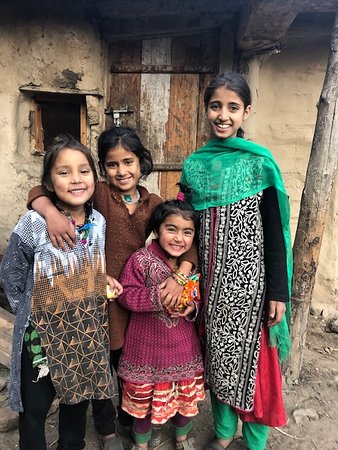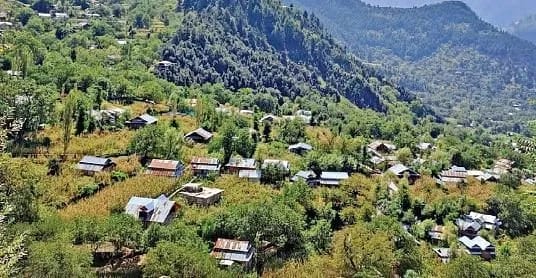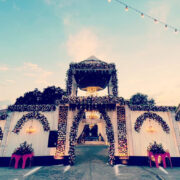Bonds Of Love And Kraaw: The Festival For Kashmir’s Daughters

Kashmir is not just a valley cradled by sky-kissing mountains or traversed by glistening Naags (natural springs) and rivers. It is not merely the apple, the saffron, or the rustling chinar leaves that define it. It is more than that — it is the name of one of the world’s oldest living cultures. A land rich in heritage, wisdom, and timeless beauty.
Kashmir is synonymous with hospitality. It represents a deep sense of belonging — the essence of kinship and connection. It conveys emotional bonds, familiarity, and a profound sense of “own-ness.” Kashmir is the name of deep emotions, a land of care, love, and affection. Here, even strangeness feels like a stranger. Wherever you go, you are embraced by a sense of belonging. Even the trees and stones seem to whisper, “You are one of our own.”
( Every speck of my Kashmir is guest gracious, Even the roadside stones have offered me water)
Kashmir has always been beautiful in a holistic way, and I pray it remains so forever. But I would never claim that it hasn’t changed. It has, and it has changed a lot. Change is the symbol of life. That which does not change is lifeless. And the dead tell no tales. Kashmir is alive and, ah, it has many tales to tell for those who are willing to listen.
When The Daughters Came Home
One such tale is rooted in the fading tradition of Kraaw – a legacy of healing, connection, and loving bonds that echoes through time. This tradition belonged exclusively to daughters, the married ones, and would arrive with the ripening of the bean plants. While most festivals in Kashmir are celebrated communally, Kraaw stood apart. It was quiet and personal, observed within individual families on different occasions. It was intimate, emotional and deeply rooted in love.
A few days before the designated day of Kraaw, a trusted close relative, often father, brother or uncle, would visit the daughter at her in-laws’ home. With humility and respect, he would appeal to the elders there, preferably the father-in-law, requesting that she be allowed to return to her maternal home for the celebration. Children were always welcomed with open arms at their nanihaal (mother’s parental home). The arrival of the son-in-law, however, was rare, and symbolic. Inviting him was a quiet yet powerful gesture. It was a kind of litmus test: a sign that he was treating their daughter with love, dignity, and care.
Symbolic Bridge Between Two Homes
This ritual was more than a formality. It was a symbolic bridge between two homes – one she was born into and the other she now belonged to. Her children were always received with wide arms and joyous hearts in their nanihaal, the home of their maternal grandparents. For them, it was a season of laughter, freedom, and unconditional affection.
When Kraaw drew near, daughters would wait with anxious eyes and hopeful hearts, gazing endlessly at the path, longing for a messenger from home. The chirping of a bulbul at the window was the most cherished sound — more soothing than the trickling of droplets down leaves into a still pond, or the murmur of a brook kissing the roots of trees as it flowed. Chirping of bulbul was deemed a sign of some guest coming home.
When the blessed day finally arrived, fresh bean pods were plucked from the kitchen garden. Cleaned and cut into segments, they were lovingly cooked with home-raised desi chicken — a special meal prepared for the evening feast. At dusk, the daughter would arrive with her children, her pockets brimming with toffees, sweets, desserts and peanuts. No sooner had she stepped into her maternal home than she would be swarmed by nieces and nephews — not so much for her return, but for the treats she brought.
The Loving Celebration Of Kraaw
The night that followed was long and full of warmth. The family gathered around the guest daughters, and conversations flowed across topics both light and serious. Amid laughter and memories, mothers and aunts would gently remind them to preserve goodwill in their in-laws’ homes — to endure challenges with patience and grace.
Kraaw was never about pomp or spectacle. It was a quiet celebration of enduring bonds of a daughter’s place that never faded, no matter where life took her. A celebration of roots, return, and the love that waits — silently, steadfastly — for the ones who carry its legacy forward.
Unlike festivals celebrated with noise and fanfare, Kraaw was intimate and gentle, observed quietly in homes. Yet, its impact was deeply emotional and lasting. Though married, the daughter was never seen as someone who had completely “left” her family. Her place in her parental home remained unshaken, her identity was not thought to be erased, but only expanded. Kraaw reminded us of a heritage that values relationships, patience, and grace, acting as a cultural compass in uncertain times.
Let Us Revive All Our Beautiful Traditions
It is deeply disheartening to watch that this tradition has fast disappeared from our homes and hearts, especially here in the southern part of the valley. What was once a quiet ritual of love, connection, and care has now faded into memory for many.
Yet traditions like Kraaw were never just customs. They were threads in our social fabric, knitting families together, preserving emotions, culture, and community. They reminded us who we are, where we come from, and what truly matters. It is never too late to remember. Never too late to rebuild and never too late to revive.
Let us pledge to revive all such beautiful traditions which may be dying. Let us breathe life into our heritage before it fades beyond reach. Let us not allow Kraaw to remain only in memory. Let’s bring it back, quietly but proudly, as part of our living culture.
(Bashir Ahmad Dar is a teacher by profession and can be reached at darbashir1234321@gmail.com)
Got a fresh perspective? C-KAR invites original articles and opinion pieces that haven’t been published elsewhere. Send your submissions to deputydirector@c-kar.com





